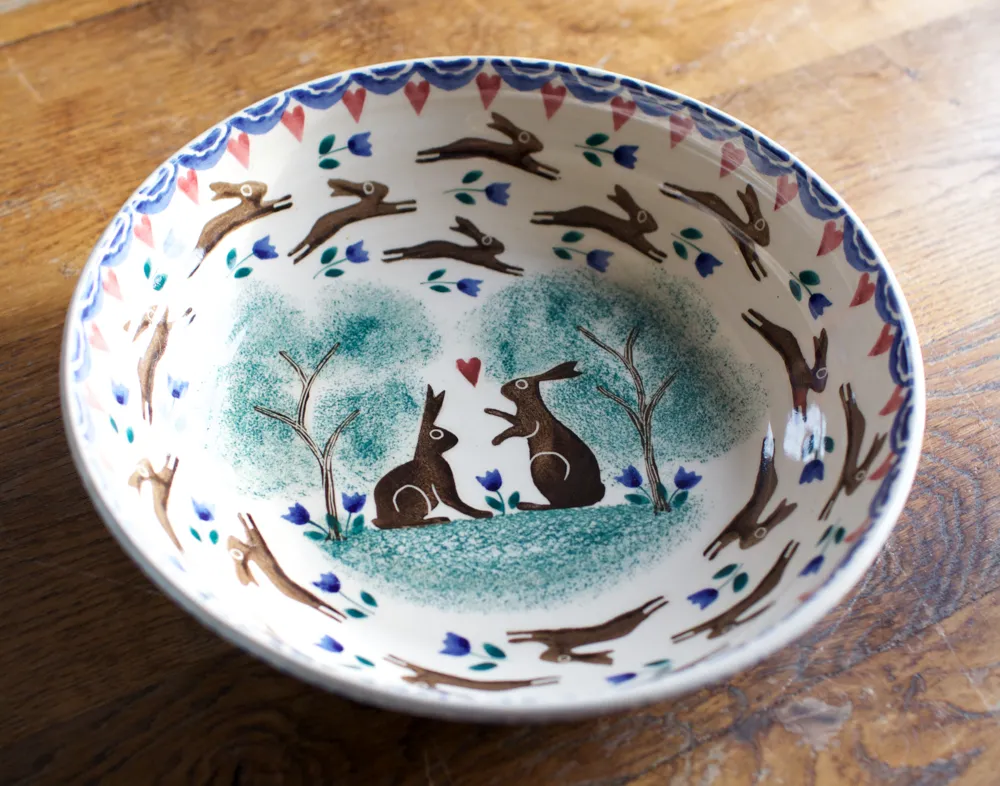I use this little bowl for our family Easter bonnet competition. We have a party on Easter Monday where everyone is sent out into the garden, which is full of spring flowers, with a straw hat and they have to make an Easter bonnet. I use the bowl to hold all the pins and ribbons and sticky tape.
It was made by a local potter called John Atkinson. I had driven past his pottery a number of times but had never gone in. My partner couldn’t believe that I hadn’t and he bought this bowl for me for Christmas. John makes and glazes the pots and his daughter paints them.
All of the china that we eat off is antique. I can’t seem to stop buying it. I have about 35 teacup-and-saucer sets dating from the 18th century onwards. I use them as coffee cups because, of course, teacups were so much smaller in the past.
You can buy an antique plate for £10 or less. You’d spend the same on a modern plate and the beauty of having lots of different antique ones is that they don’t have to match. If one breaks, I go to an antiques shop to replace it.
I’m a great colour coordinator. I tend to choose predominantly blue or red-coloured china to match the curtains and upholstery in the dining room. I love Coalport blue and the Royal Doulton patterns that are lined with gold.

I try to avoid buying too much in the Cotswolds. It’s the antiques centre of England, so things can be more expensive. I was in Hereford recently and I found a set of cups and saucers for £8 that would have cost nearly £40 near me.
The other thing I collect is plastic jewellery. I love bright things and I must have about 150 necklaces hanging from pegs along the wall of my bedroom. I seldom spend more than £10 on jewellery.
The one thing I would have to save if the house were on fire is a tapestry by a French artist called Bernard Cathelin. He was a friend of Picasso’s and I found the tapestry after I went to an exhibition of his in a tiny medieval village in Provence. One side is lime green and yellow with a Japanese woman on it, while the other is pitch black with two figures shown talking together. You can make so many stories from it.
My most treasured piece from South Africa, where I was born, is an 18th-century rent table. It has a circular top that you can spin, with drawers around the edges. It belonged to Lord Charles Somerset, who was governor of the Cape Colony until 1826. My grandmother bought it in the 1920s and I always played with it when we visited her.
I seldom deliberately go antiques hunting but I can’t resist a look. When we first moved into this house, my husband set me a budget to go and buy practical things such as furniture and saucepans. I went to Kings Road and came back with a chinoiserie screen. He had to keep a tighter rein on me after that.
Prue’s new book, The Food of Love (Quercus), is out now. prue-leith.com
Interview: Alice Hancock
Portrait: Grant Scott